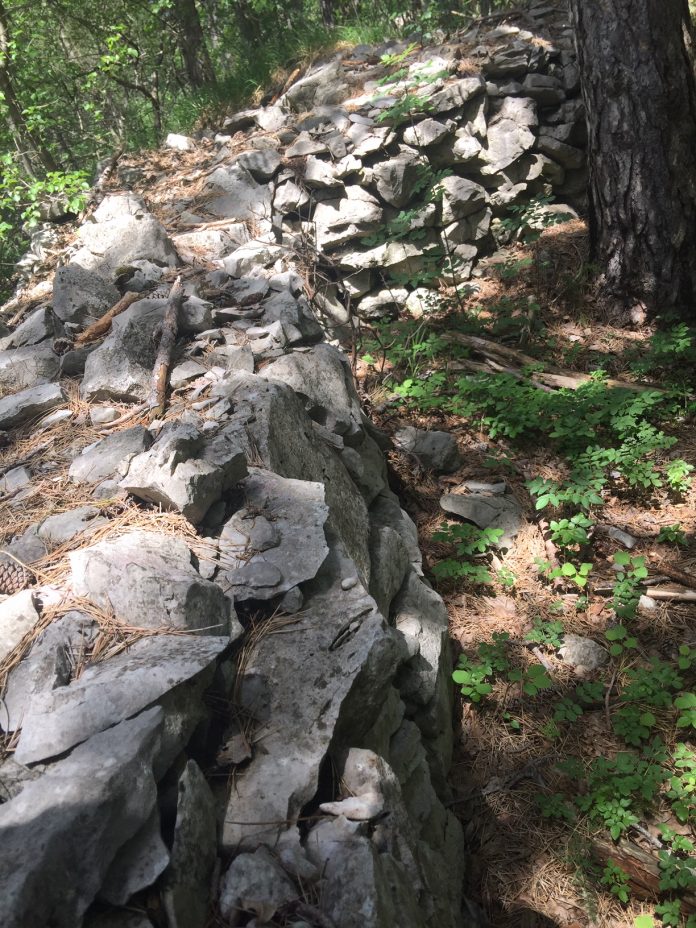by Alessandra Ressa
Austro-Hungarian trenches from the Great War re-emerge from nature on the Karst hills of Trieste. The stunning fortifications facing the sea are now an open air museum.
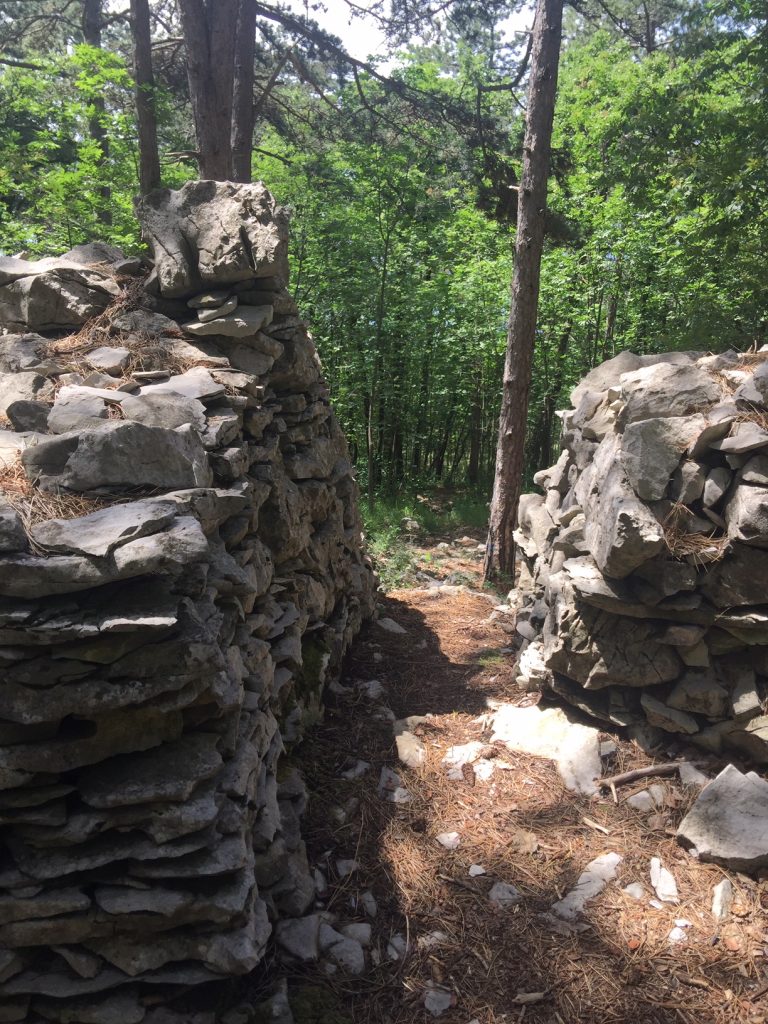
Not a day goes by in Trieste without senior citizens expressing feelings of nostalgia about “the good old times” when this town on the Adriatic sea was part of the Austro-Hungarian empire. According to them, the Austrians really knew all there was to know about efficiency, esthetics, architecture, technology and civilization in general. “All that’s worth in town today – they say – was done by Austria!”
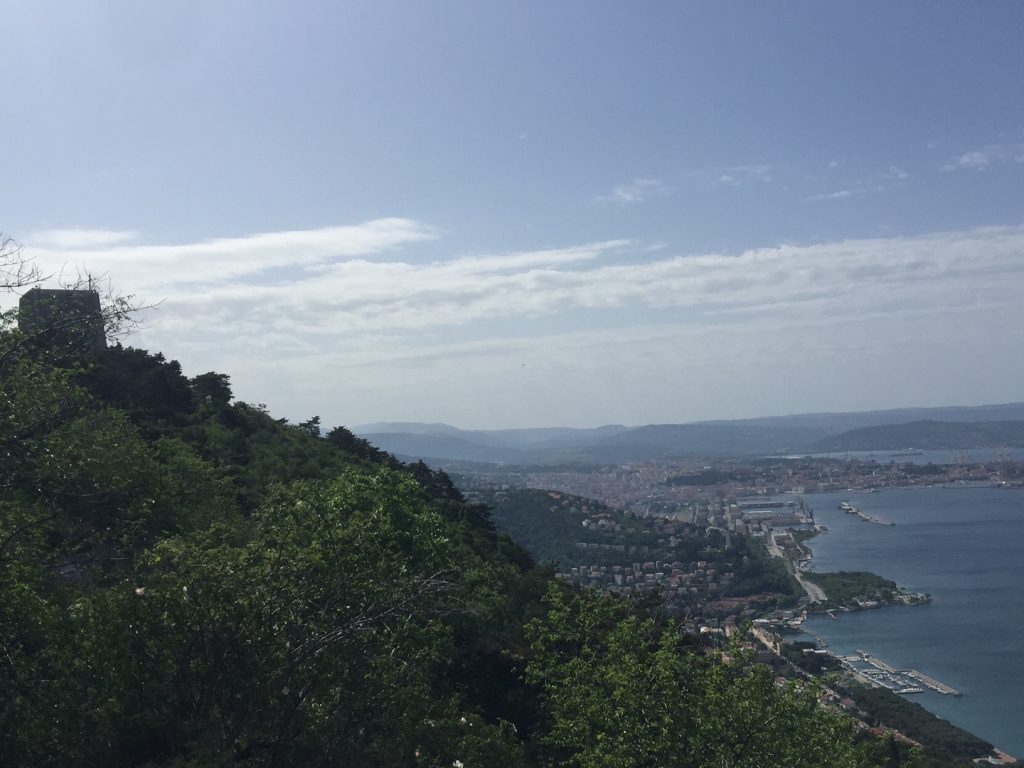
Although no one can argue that the attractiveness of Trieste is in the harmony of its diverse architecture and culture, it is true that all things here built by Austrian Hapsburg Empress Maria Theresa are undoubtedly beautiful. This applies even to basic military constructions, such as the War World I Austrian trenches above the Napoleonica trail, on Mount Gurca. It may be a bit audacious if not inappropriate to use the word ‘beautiful’ when describing WWI trenches. There is nothing beautiful about them. They usually stand for suffering, death, mud, cold, and fear.
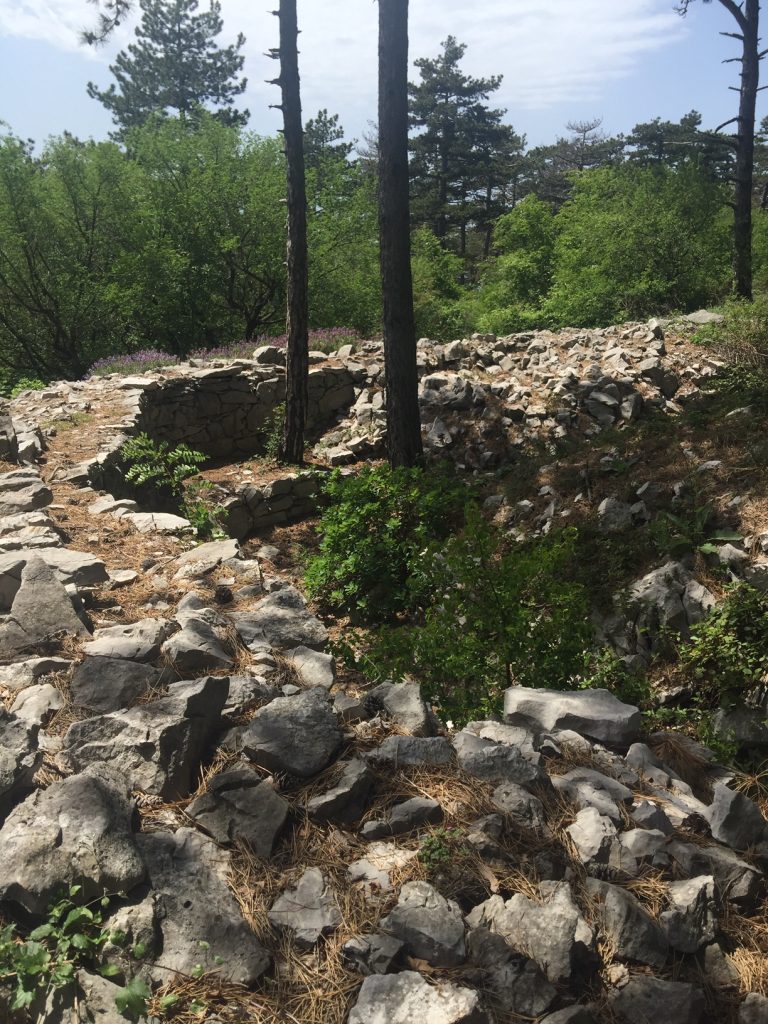
Yet, the trenches in the woods between the Santuario of Monte Grisa (the unpopular trapezoidal-shaped church located at the top of the mountain) and the end of the panoramic Napoleonica trail (the Obelisco) are indeed beautiful, with their snake-like shape twisting vertically to the sea. In addition to the traditional dug passageways, the creative Austrian army collected all the abundant white washed limestone that had been cleared off the walkways and constructed protective stone walls on both sides. The visual effect is still stunning today.
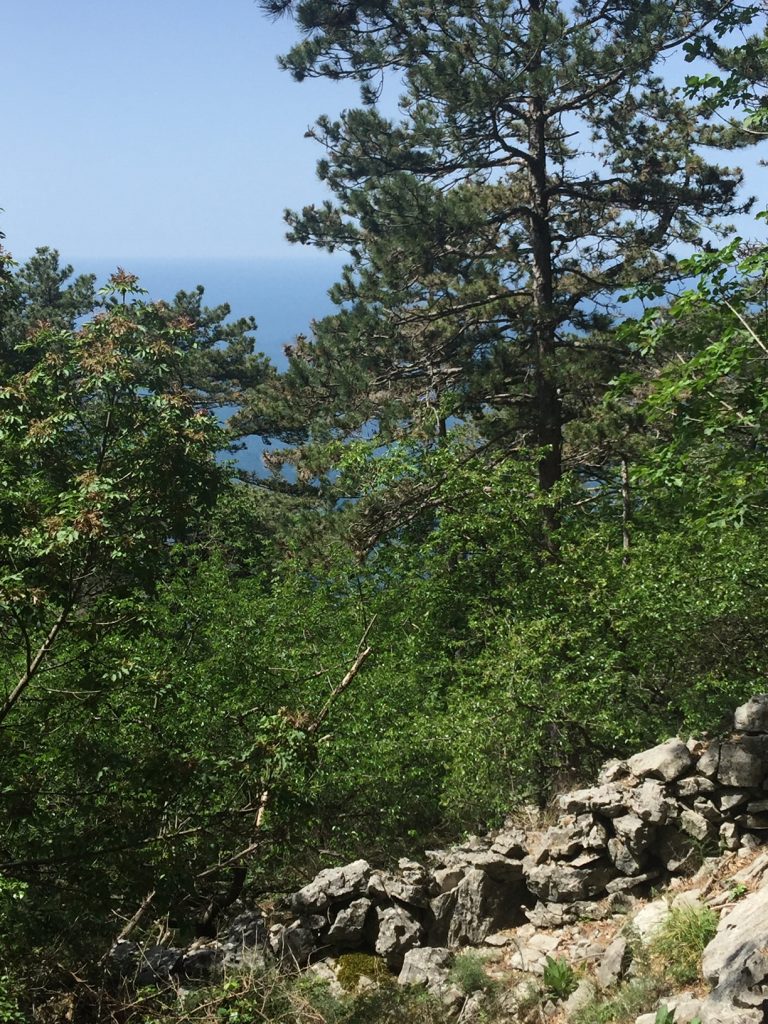
The 40 Infantry Regiment of the powerful Austro- Hungarian army was assigned here to protect the town that Maria Theresa loved best, her little jewel on the water, with its strategical, military and commercial invaluable port.

The Austrian soldiers posted to these fortifications not only enjoyed the best sea view in town (there was no tall vegetation one hundred years ago) but no battles were ever fought here. The trenches were part of a defense system meant to guarantee protection from sea attacks that never came. It appears that, while elsewhere in Europe the Great War was causing death and devastation, in the entrenchments of Trieste soldiers suffered from idleness.

An infantry private assigned to this area, Erwing Schroediger, wrote in his diary that he was in “an observation outpost not far from Prosecco. It is a beautiful location, although tremendously boring.” He later became a Nobel Prize winner for Physics. According to his biography, work in those trenches was so dull that he actually had plenty of time to study for his exams at university.

This vast area of fortifications had fallen into oblivion until a handful of local organizations and experts decided just three years ago to clear some areas off the thick vegetation, restore some of the fortifications, and establish an open air museum, now known as Parco della Trincea del Litorale. Today, you can follow the trail that begins on the right at the entrance of the Via Crucis (Via Robert Baden-Powell) and comfortably enjoy five spots where the fortifications have been made easily accessible to visitors. Next to each spot there is a metal column with a QR-code that you can use to download information on your mobile.
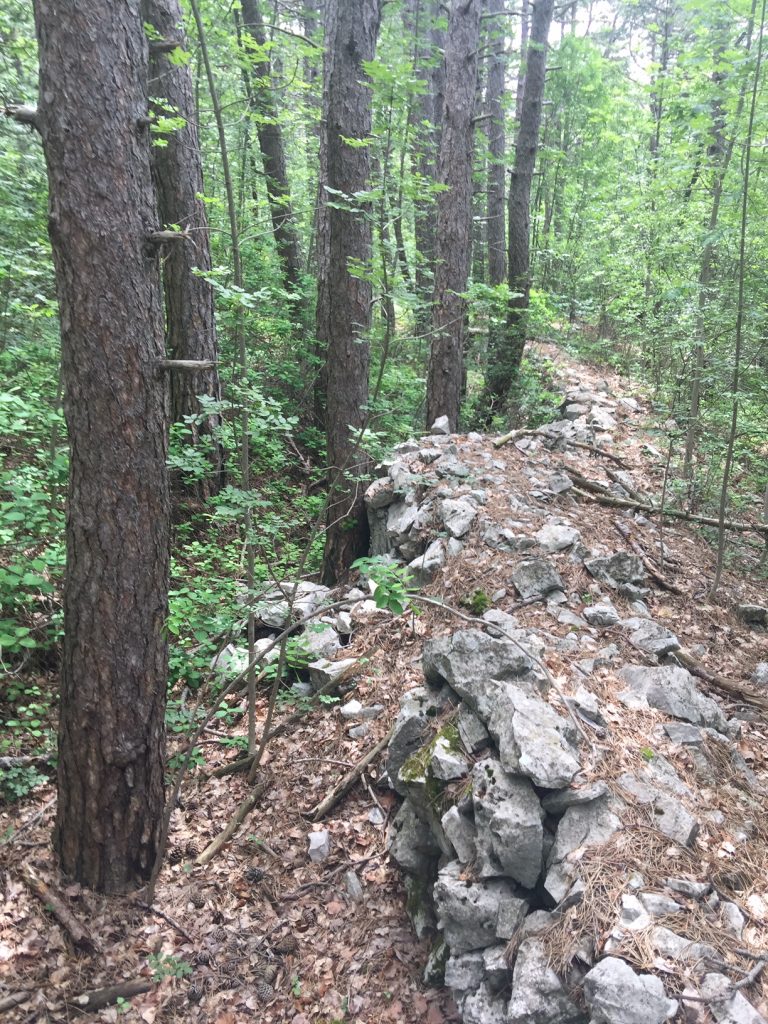
The remaining trenches, kilometers of them, winding up and down the side of the mountain are harder to explore, steep, unstable, often engulfed in thick vegetation and thorny bushes. Follow the scent of the stretches of wild sage in bloom covering the rocky flat tops of the entrenchments. During springtime you may be able to enjoy many rare Karst flowers in bloom, such as wild irises and wild orchids.
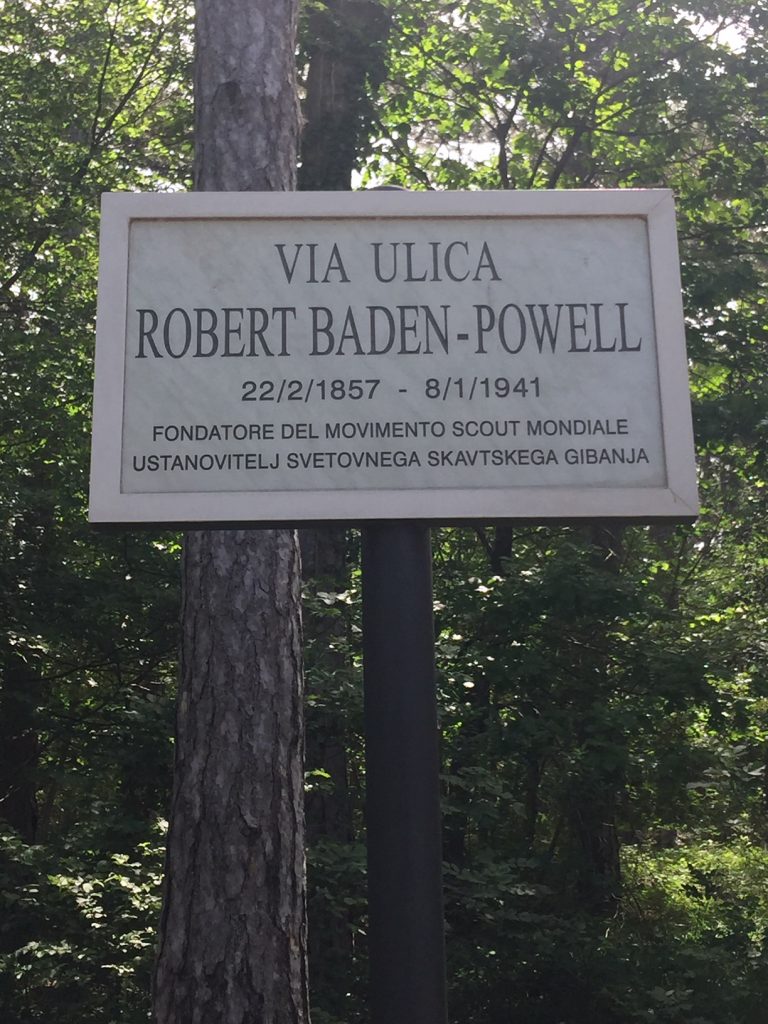
On the other side of the narrow paved trail named after Baden-Powell, if you have an eye for military sights you might spot more traditional looking dug trenches, which exploited natural caves as deposits and shelter.
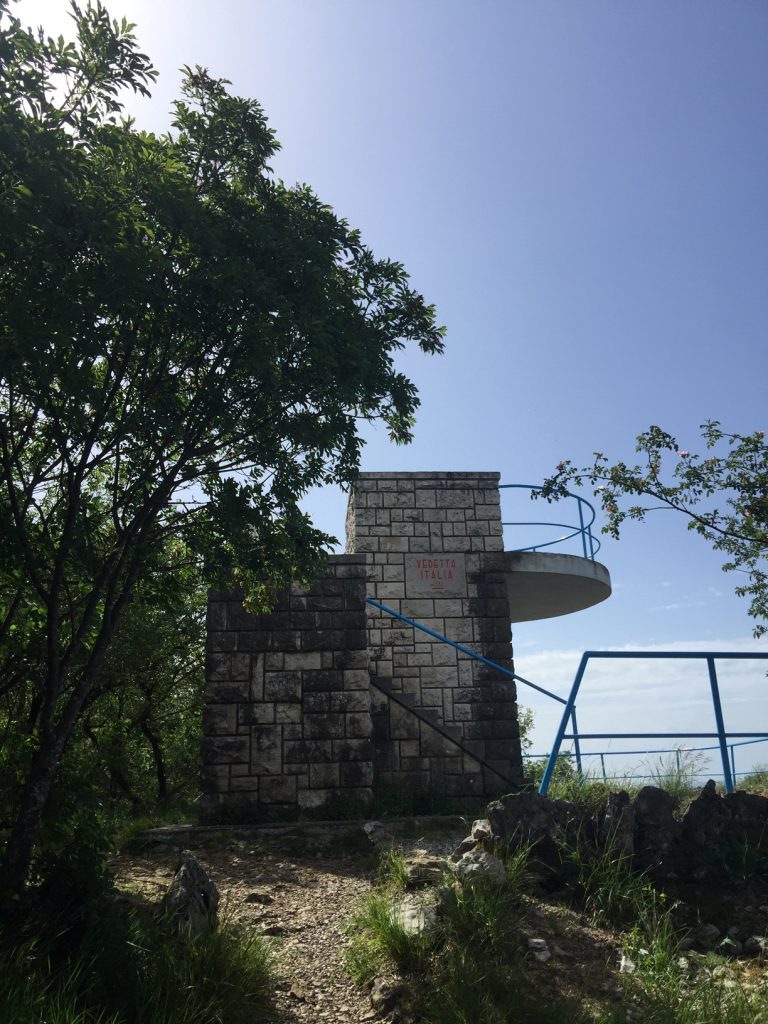
The Parco can be reached from Santuario di Monte Grisa. There is a free parking lot if you come by car, or you can get bus n. 42 from Piazza Oberdan or Stazione Centrale and get off at Monte Grisa. If you feel like adding a few extra kilometers on your legs, you could start at the beginning of the Napoleonica trail in Opicina where the obelisk stands, and turn right at the end of the panoramic walk towards Monte Grisa (you will see maps here and there, it’s impossible to get lost). After a bit of a climb you can stop for a rest at Vedetta d’Italia, dating 1956 and recently restored by a group of volunteers, where you can enjoy the best view of Trieste.

























